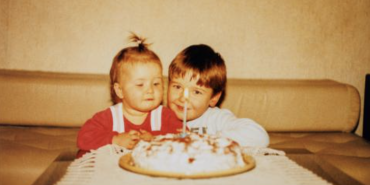Worship and the Family Table

It is increasingly common for me to find myself in the midst of a conversation where leaders are wrestling with questions like, “How do we structure a worship service so children will want to engage?” or, “How do we structure an event so children and adults can worship together?” Somewhere in the midst of that conversation, it becomes clear that we are all interested in the same outcome. We are passionate about raising children who love God with their whole heart, soul, mind and spirit. And we will continue our search until we discover the way. However, sometimes I wonder if in our search we have overlooked something that naturally draws us into community and offers a sense of belonging: the family table.
I vividly recall the day a furniture truck pulled up to our home to deliver a new dining room table. It included beautiful high-back chairs and a glossy, smooth finish. Aside from my mom’s piano, it was the finest piece of furniture in our home. Without a pad and tablecloth to protect the surface, we were not allowed to do homework or set a cup on the table. It was purchased to accommodate our large family, and most evenings it included many other friends and family members.
It was at that table that I learned to pass the potatoes to the left.
I learned the importance of minding one’s manners.
At the table, we came to understand that offering hospitality created occasions to witness a “loaves and fishes” reenactment, and there was always enough.
At the table, I learned that conversation means that everyone gets a chance to talk, even if it is baby babble.
I observed problem-solving and conflict resolution.
When company came, the table was extended to make room for more.
I learned the art of storytelling and life-giving laughter.
I learned that lingering at the table was good and clearing the table was easier when everyone did their part.
We all knew my grandpa prayed long.
The children led us in memorized prayers.
And my mom’s voice would break after opening her prayer with, “Dear Jesus…”
I did not realize it as a child, but the way we gathered around and cared for that table spoke volumes about the way we valued the activities of the table. We treated the table as if it was a holy and sacred space. And every person knew they belonged.
Imagine with me for a moment that my parents had purchased two tables that day: a smaller table for the children to eat in the kitchen and a larger table for adults to eat in the dining room. Of course at the kid’s table, there would be a fun-loving adult to plan the meals, instruct the activities and tend to etiquette. The children would eat from a plate shaped like a monkey face while they recited prayers and rhyme through finger-play. At the kid’s table, there would be an unlimited supply of macaroni and cheese and chocolate milk. The stories would be fast paced and just long enough. A child would spend their early years fully engaged in the kids’ table, paying very little attention to the big table in the other room.
And then, as a child approaches adolescence, he or she is told that it is time to transition to the big table, a space that may seem unfamiliar and perhaps a bit mysterious. When they are assigned a seat at the big table, they look around and notice that things are not the same: "This is not my plate or my food. These are not my prayers or my stories or my traditions. At this table, everyone sits too long, and I do not know when it is my turn to talk. I wish I could go back to the table where everything was just the way I like it. I do not feel like I belong here. Perhaps I will find another table.”
When I reflect on the family table, I am always struck by the profound similarities between the table and a worshiping community.
In the early days of the church, children were fully present for songs, prayers, giving, and the proclamation of the Word. Children witnessed and even participated in Eucharist, baptism, liturgies, and creeds. Much like the model of the family table, there was a place for worshipers of all ages to belong.
More than 40 years ago, author John Westerhoff III invited us to think about the significance of simply and purposely having children remain in our rituals of worship – to remain at the family table. Westerhoff wrote, “Being present for rituals that are rehearsed through words and actions help us tell and retell our sacred story. They are the basis of spiritual life. For this reason, we must not eliminate children from participating in our rituals of worship.”
If I were to stop right here, it may sound as if I am advocating for the Church to do away with age-level classes, children’s worship and children’s activities. Actually, I am not. I am a longtime children’s pastor. Instead, I am advocating for the Church to continue to wrestle with intergenerational identity. I hope we will rediscover the best ways to live it out.
This is not about starting a new program. Instead, it is about embracing the places where the community naturally comes together.
Children are often referenced as the “church of tomorrow,” and that is true in terms of serving as our future pastors, teachers and leaders. However, they are also the church of today. Children are followers of Christ right now. Katherine Stonehouse, the author of Listening to Children on the Spiritual Journey, reminds us that we need the presence and interaction of children not only so we can pass faith along to them, but also so they can also challenge us in our faith as adults.
Deuteronomy 6 prompts us to pass faith along when we get up, when we lie down, and when we walk along the road. In other words, in all of the ordinary places in which we find ourselves, the story of God is to be on our lips. Perhaps we could begin by resetting the family table.
Margaret Tyler is a longtime children’s pastor who currently serves as the district children’s pastor for the Kansas City District Church of the Nazarene.
Holiness Today, November/December 2017
Please note: This article was originally published in 2017. All facts, figures, and titles were accurate to the best of our knowledge at that time but may have since changed.




